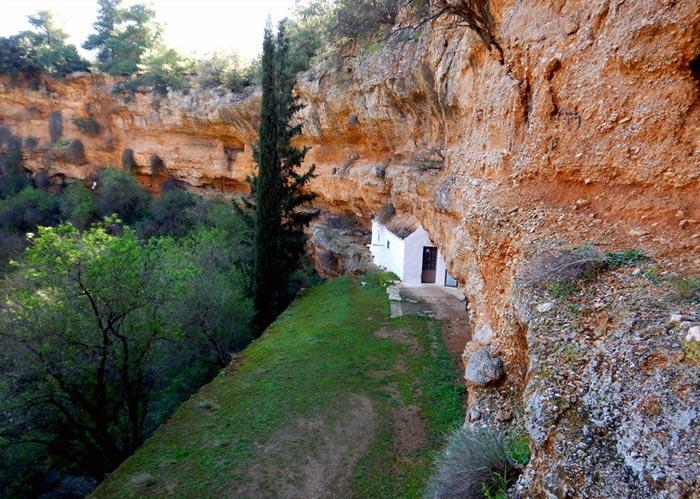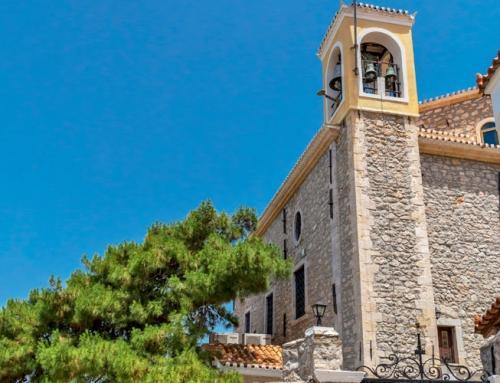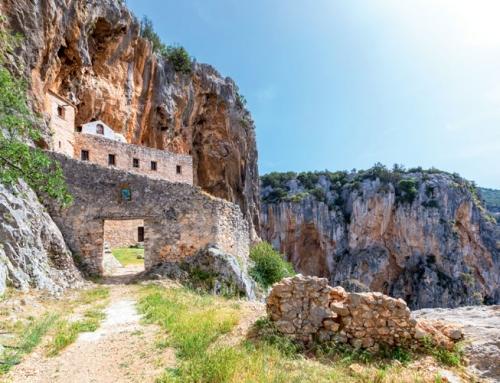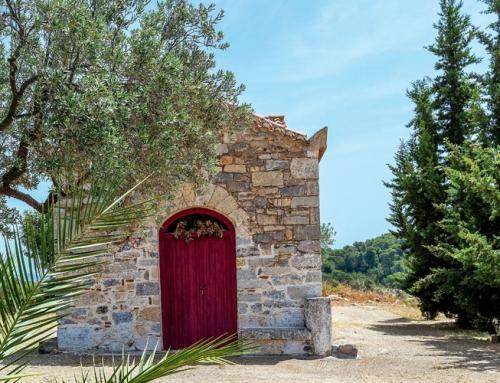On the foothills of Mount Didymos in Argolis there is a unique geological phenomenon. The earth has sunk down in two places that look like volcanic craters….
The two craters, known as dolines i.e. caves, are circular in shape and are visible from a great distance because of their size. One is located at the foothills of the mountain and is called the large cave and the second, on the plain and is called the small cave….
Prehistoric people fled there to protect themselves from natural phenomena and during the Turkish rule, the local people used to carry nitro from the urine of animals from the big cave and make gunpowder for weapons. The smaller crater is overgrown with pine trees and two churches, St. George and Metamorphosis, are carved into its rocky walls. A downhill gallery resembling a well is the most ancient entrance to the cave. According to local legend, this is where the cave of Cyclops was, from which Odysseus and his companions escaped. A second entrance, constructed by the monks, leads to the interior of the cave, where the two carved churches, a stone pool, a small cistern and a hole known as the “Askitario” are located, through which the hermits ascend with a rope and it is said that the horse of St. George left its mark there….
The small crater is 80 meters deep and 150 meters in diameter. The large cave, unlike the small one, has no vegetation and has a different shape. But both of them have very good acoustics and a haven for many species of birds …
In the fertile valley surrounding the mountain and the craters is the historic village of Didyma. Pausanias visited the village during his tour of ancient Argolis and mentions it in his work as Didymoi, where there were the sanctuaries of Apollo and Demeter. ‘And another village, called Didymus, where one can find the sanctuary of Apollo, and Poseidon, and Demeter stone statues.”





